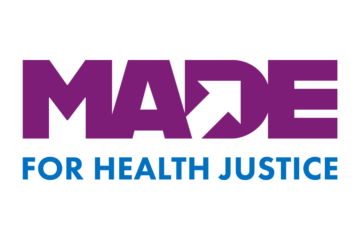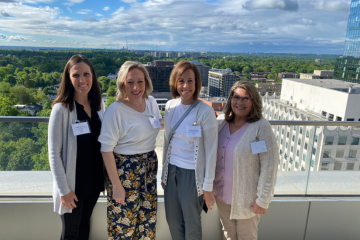 A few weeks ago, I traveled to San Diego for the Root Cause Coalition’s National Summit on the Social Determinants of Health. Before the conference started, I took some time to walk down the Ocean Beach Pier. Blue cloudless skies, cool breeze and all, it was hard to ignore the people huddling on the boardwalk. It struck me that I’d come to learn about the social determinants of health in a county with one of the largest homeless populations in the United States. Housing is a pillar of wellness — a right, not a commodity. Unfortunately, we have a broken system that forces people into survival mode.
A few weeks ago, I traveled to San Diego for the Root Cause Coalition’s National Summit on the Social Determinants of Health. Before the conference started, I took some time to walk down the Ocean Beach Pier. Blue cloudless skies, cool breeze and all, it was hard to ignore the people huddling on the boardwalk. It struck me that I’d come to learn about the social determinants of health in a county with one of the largest homeless populations in the United States. Housing is a pillar of wellness — a right, not a commodity. Unfortunately, we have a broken system that forces people into survival mode.
Supporting equity, well-being, and justice means addressing the social and structural determinants of health. Usually, these concepts are euphemisms for the impacts of racism, colonization, violence, poverty, the systematic denial of quality housing and food, and other intersecting factors. But how are influential sectors tackling and talking about these issues?
This summit focused on evolving partnerships among the healthcare sector, universities, community-based organizations and stakeholders, foundations, and health departments to meet individuals’ social needs. Here are my top three takeaways and reflections.
1. Health systems are late to the game.
Health systems and hospitals are keen on addressing the non-medical needs of their members and patients. Long overdue, the healthcare sector has realized it can’t expect patients to successfully adhere to their medical treatment plans if they lack basic needs, such as quality, stable, and affordable housing.
Multi-sector efforts include developing and implementing tools to screen for social needs and linking individuals to social support services and case management. However, the implications for this type of screening need to be carefully considered. I heard the term social risk screening, which caught me off-guard because it eerily implies that those screened could be a burden to society. We should re-evaluate the way that we speak and consider the unintended consequences of this type of screening, especially for vulnerable groups. It’s also important to be realistic about data collection and providers’ actual capacity to link individuals to community resources.
We should re-evaluate the way that we speak and consider the unintended consequences of this type of screening, especially for vulnerable groups.
Also, while the enthusiasm brewing among payors and hospitals to support this work was palpable, this isn’t a novel approach. Communities have been addressing social needs and health equity concerns long before these sectors stepped in. This has garnered health systems’ commitment to a bottom-up approach, stressing the importance of engaging with and being led by community members to drive decisions and solutions. I hope that translates into practice, because building community trust isn’t so much about us giving the community a seat at our table, but us earning a seat at their table through transparency and humility.
2. We need to be clearer about what we mean when we talk about social determinants of health.
“Social determinants of health” has become a buzzword, but there’s no consensus on what it means. People often use the terms social determinants of health and social needs interchangeably, and this forum was no exception. Presenters talked about distributing medically tailored meals, implementing produce prescription programs, and linking individuals with temporary or permanent housing and food pantries, among other relevant and interesting work. These interventions are crucial because people are struggling to survive, and they have pressing needs that must be tended to urgently. But most of the interventions fall under the “social needs” umbrella, because they meet the needs of individuals once they seek medical attention and are already suffering the effects of unjust conditions.
Truly addressing social determinants of health implies effecting transformative change at the community and structural levels. At the summit, public health folks emphasized health policy beyond medical care policy as a key lever of primary prevention and structural shift. Because I’m an unrelenting public health nerd, some (un)fortunate souls had the opportunity to hear me babble about this (surely not something people want to discuss while boarding a plane at 10pm). But it’s simple — merely reacting to poor health and failing to catalyze change at higher levels will not break this vicious cycle.
3. It’s time to shift the transactional narrative to a transformative one.
There was a call to move beyond the dominant return-on-investment discourse. Prioritizing cost savings as a measure of success and value dehumanizes this work and places institutions’ self-interests at the forefront. It reinforces the idea that the healthcare sector’s only role in addressing these problems is to provide financial support for social needs only for their individual patients, and only after they’ve become sick.
While we can start by naming things and pledging to be anti-racist, dismantling structural racism requires more than public statements or cultural competency trainings.
But that isn’t enough. Let’s call it what it is: a self-pat on the back, a cop-out. Although health systems may not be well positioned to lead the movement on social determinants of health, they need to be held accountable for improving community conditions. At one point, there was a call to be bolder in influencing the conditions in which people live. The truth is, medical institutions often perpetuate the very health inequities they hope to mitigate. The profit-driven medical industrial complex contributes to redlining, gentrification, and racism. Let’s not forget about hospitals taking families to court when they can’t pay their bills or hospital software being used to discriminate against black people.
While we can start by naming things and pledging to be anti-racist, dismantling structural racism requires more than public statements or cultural competency trainings. Institutionalizing cultural humility — a constant exercise of awareness and self-critique — and ethical policy change and advocacy are more impactful strategies. The community trust gap can’t be bridged without questioning and changing these practices.
We must be bolder in bringing these issues to light, allowing ourselves to be uncomfortable, and transforming that discomfort into action. I was glad to see that some attendees were willing to push the envelope and raise difficult questions for the sake of transparency. And yet, I craved more. I wanted to hear more public health folks and community members leading discussions around policy change, justice, and white supremacy, for example. This is the time to be loud and inconvenient to those who thrive in their comfort.
All sectors are responsible for trying new avenues for change, addressing the whole spectrum of prevention, disrupting, (un)doing, and (un)learning. I apply this to my role in public health philanthropy, asking myself what this wealth is built upon, how we can be more critical about our roles, and what we aren’t doing so well. If systems want to champion health equity, they must first understand what it means. It’s not about putting bandages on issues. It’s about working hard to unearth the roots of injustice — maybe even uprooting a bit of ourselves in the process.




